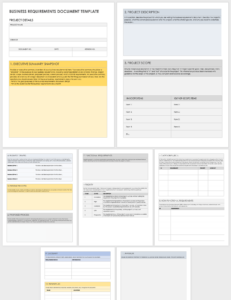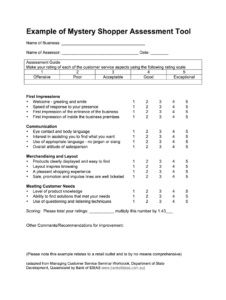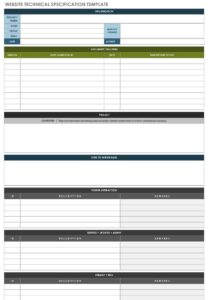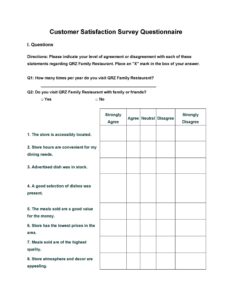Creating a backend database is a complex process that requires careful planning and documentation. A well-written backend database requirement specification template (BRS) can help you define the requirements for your database, ensuring that it meets the needs of your application. In this article, we will provide you with a comprehensive guide to creating a BRS, including a sample template that you can use for your own projects.
What is a Backend Database Requirement Specification Template?
A BRS is a document that describes the functional and non-functional requirements of a database. It defines the data that the database will store, the operations that can be performed on the data, and the performance and security requirements of the database. A well-written BRS can help you to:
* Define clear and concise requirements for your database.
* Communicate your requirements to stakeholders.
* Ensure that the database meets the needs of your application.
* Avoid costly errors and delays during database development.
Creating a Backend Database Requirement Specification Template
Creating a BRS is a multi-step process. The first step is to gather requirements from stakeholders. This includes interviewing users, business analysts, and other stakeholders to understand their needs for the database. Once you have gathered requirements, you can begin to create the BRS. The following sections provide a detailed guide to creating a BRS:
Define the Scope of the Database
The first step in creating a BRS is to define the scope of the database. This includes identifying the data that the database will store and the operations that can be performed on the data. You should also define the boundaries of the database, such as which systems it will interface with and which users will have access to it.
Identify Functional Requirements
Functional requirements define the specific tasks that the database must be able to perform. This includes CRUD (Create, Read, Update, Delete) operations, as well as more complex operations such as searching, filtering, and reporting. You should also define the performance requirements of the database, such as the number of concurrent users that it must support and the response time for queries.
Identify Non-Functional Requirements
Non-functional requirements define the overall qualities of the database, such as its reliability, scalability, and security. You should also define the maintenance and support requirements for the database. Non-functional requirements are often more difficult to define than functional requirements, but they are just as important to ensure that the database meets the needs of your application.
Review and Validate the BRS
Once you have created the BRS, it is important to review and validate it. This includes checking for errors and inconsistencies, as well as ensuring that the BRS meets the needs of stakeholders. You should also consider getting feedback from a technical expert to ensure that the BRS is technically sound.
Conclusion
Creating a backend database requirement specification template is an important step in the database development process. By following the steps outlined in this article, you can create a well-written BRS that will help you to define the requirements for your database, ensuring that it meets the needs of your application.
Remember, a BRS is a living document that should be updated as your requirements change. By following these steps, you can create a BRS that will serve as a valuable tool throughout the database development process.



